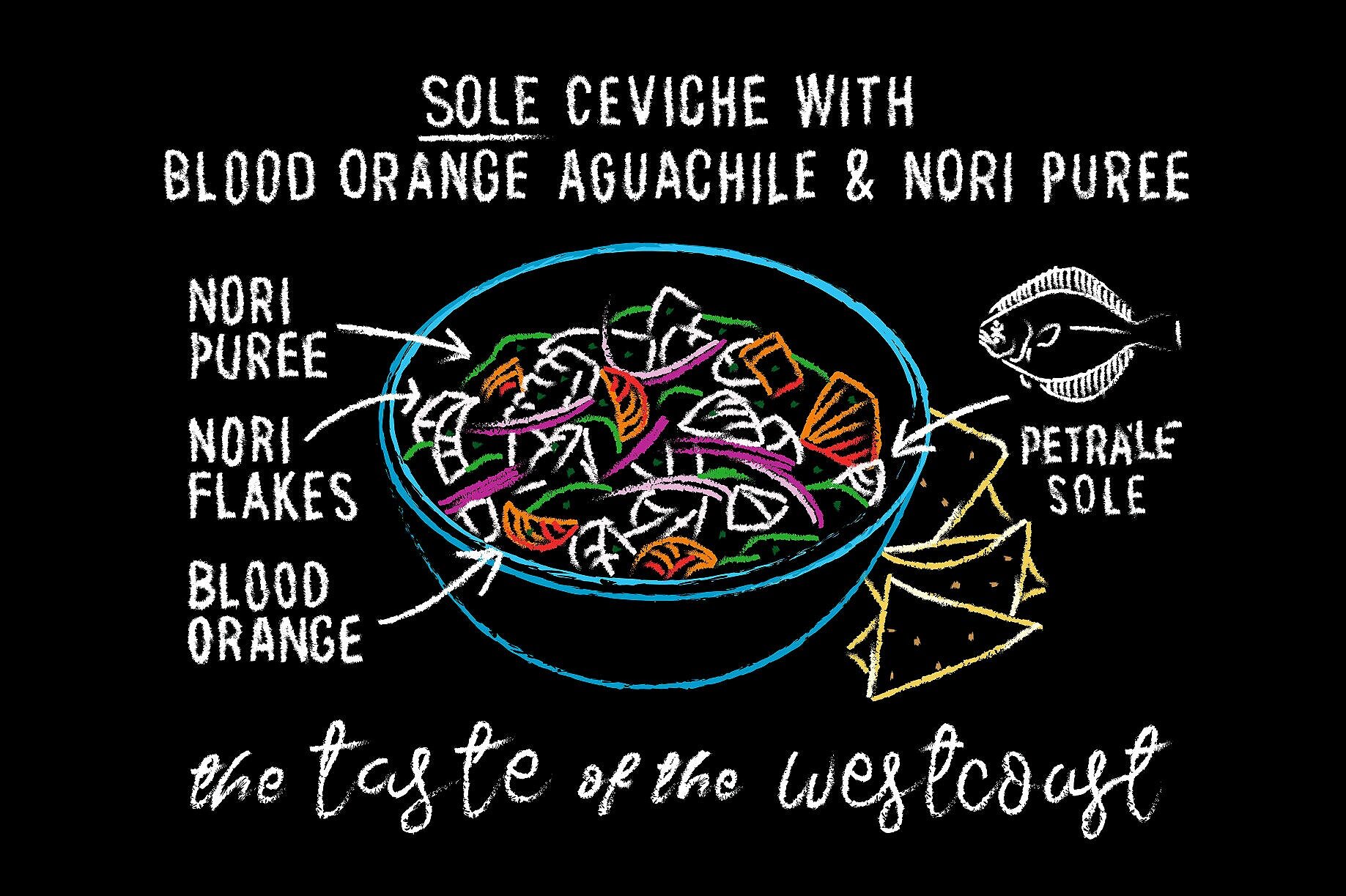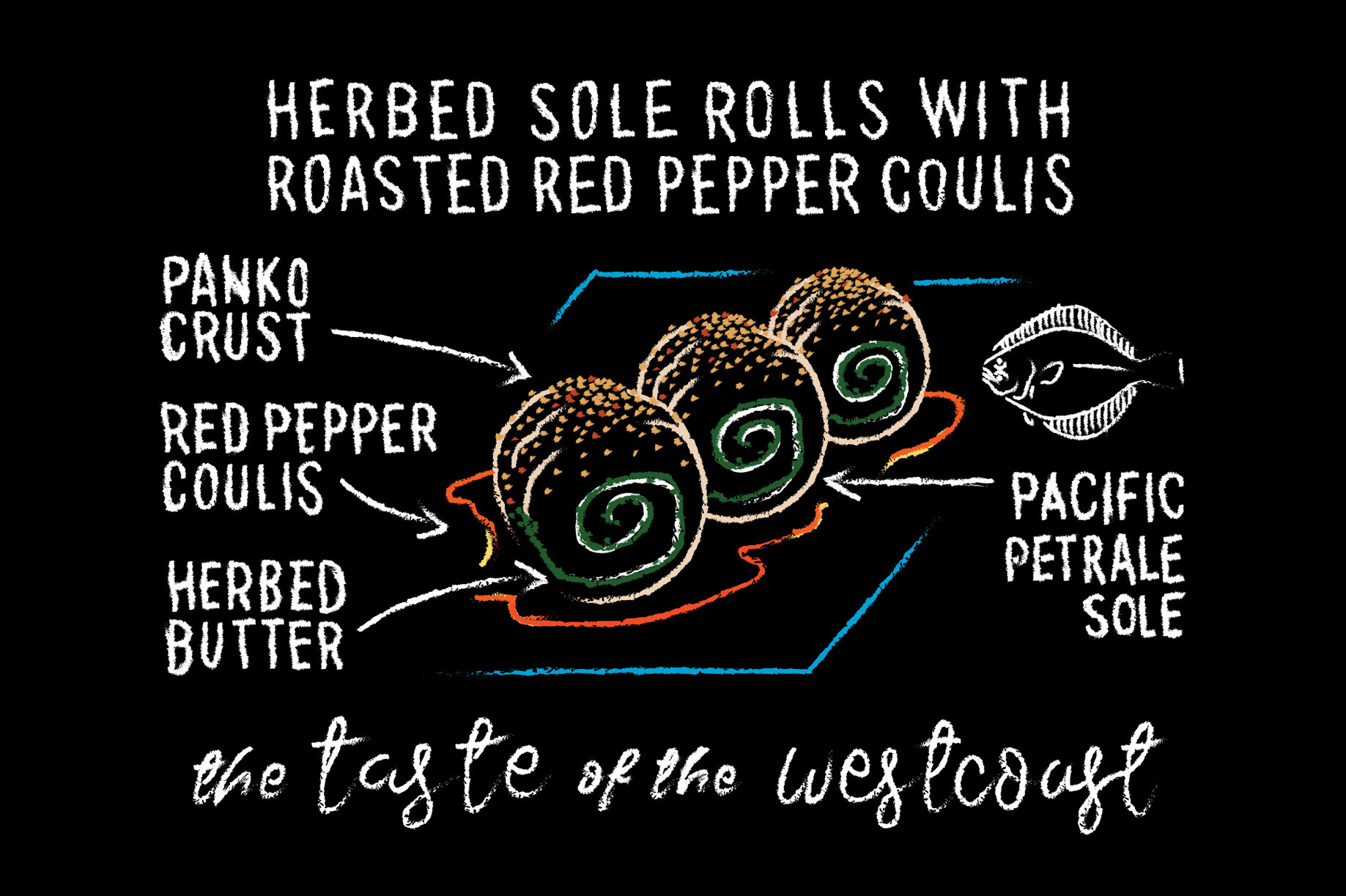SANDDAB - FISH SPECIES FEATURE
What is a Sanddab?
The Pacific Sanddab (Citharichthys sordidus) is abundant along the US West Coast, thanks to its fast growth and nearly year-round spawning habits - making them a sustainable seafood choice. They enjoy healthy stock levels and are rated a “Best Choice” by Monterey Bay Aquarium’s Seafood Watch. Sanddabs are a true West Coast delicacy and have long been a favorite, especially in the San Francisco area. Today, you’ll have the best luck finding these small flatfish at waterfront fish markets and seafood restaurants all along the California Coast.
Sanddabs are one of the smallest flatfish, which means they cook up in a flash - the original fast food! Though they are small in size they are mighty in flavor and nutrients. Sanddabs are packed with protein and low in fat, and have a mild, sweet flavor. Like any flatfish they can be cooked a variety of ways. Though their smaller size lend them to being cooked whole - being it baking, grilling, deep-frying, pan-frying or even steaming.
Sanddab Quick Facts
Sanddab Biology
The Pacific Sanddab belongs to the sand flounder family (Paralichthyidae), which includes around 20 species found along the Pacific Coast. These fish are oviparous, meaning they lay planktonic eggs that drift with ocean currents until the larvae develop enough strength to swim on their own. When bought fresh, they usually appear in shades of brown with yellow and orange splotches, but underwater they can take on a darker, almost black hue with white markings, helping them blend into their sandy environment.
Sand Dabs are fast-growing and quick to mature, beginning to spawn at just 2 to 3 years old. They stay relatively small, typically reaching 6-8 inches in length and weighing between ½ to 2 pounds - adorably tiny for a flatfish! They may look like a petite, sweet-natured sand flounder, but don’t be fooled, they have a voracious appetite and will eat just about anything they come across, including small fish, squid, octopus, various eggs, luminescent sea squirts, shrimp, crabs, and marine worms.
Like other left-eyed flounders, Sanddabs undergo a fascinating transformation as they mature - their right eye shifts over to the left side of their body, allowing them to camouflage seamlessly on sandy seafloors. They are most commonly found at depths of 120 to 300 feet, though they have been recorded as deep as 1,800 feet. These little homebodies are remarkably sedentary, rarely venturing beyond a two-mile radius from where they settle. They are abundant along the entire U.S. West Coast, all the way up to the Aleutian Islands, making them a staple of local fisheries and seafood markets.
Sanddab Sustainability
Wild & Natural
Sanddabs is a wild-caught fish species. And that means that it requires no arable land, no precious fresh water, nor any fertilizer, pesticides, polluting chemicals, or any antibiotics to produce this great protein source.
Healthy and Abundant fish population
Sanddabs belong to the West Coast groundfish fishery which is among the most positive sustainability success stories around. This species enjoys healthy stock levels and is not subject to overfishing.
Well-managed fishery
Sanddabs are subject to a rigorous science-driven management process through the federally appointed Pacific Fishery Management Council that ensures continued abundance in future. This entails scientifically set limits on total catch, and limitations on when, where and how fishing can occur (i.e. avoiding spawning season, avoiding sensitive habitats or gear that minimizes accidental by-catch).
Keeping it local
While the average seafood product consumed in the United States clocks up over 5,000 food miles, Sanddabs are caught and processed locally on the West Coast. Keeping it local not only minimizes food miles and their carbon footprint, but also maximizes product freshness and quality.
monitored FISHERY
Sanddab fishermen are fully accountable for their catch. West Coast fishermen who catch Sanddabs are subject to oversight and have to keep complete records of all of their catches.
Independently ReCommended SUSTAINABLE
Sanddabs are rated as a green “Best Choice” by Seafood Watch.
Sanddab Nutritional Content
Sanddab may be small, but they pack a nutritional punch. They are low in fat (1.3g per 100g) and high in protein, providing approximately 19g of protein for just 90 calories. That means 89% of total calories are from protein, which is more than chicken breast, egg whites or whey protein powders. A whole Sanddab provides a substantial amount of high-quality protein, helping to meet your daily nutritional needs with ease!
A full profile on their micronutrient content is still to be developed but many of its flatfish family members have fantastic levels of selenium, phosphorus, and potassium.
Learn more about how Petrale Sole compares to other foods here.
Sanddabs Taste & Cooking
Taste: Pacific Sanddab is highly regarded by both chefs and seafood lovers for its sweet, delicate flavor and exceptionally moist, tender texture. Sometimes called “mini halibut”, they belong to the same family and offer a similarly mild taste but in a smaller, more approachable form. Their naturally soft flesh makes them an excellent, easy-to-cook alternative to larger flatfish.
Preparation: Thanks to its petite size Sanddabs cook incredibly fast - from fridge to pan to plate in under 5 minutes! Many recipes call for leaving the bone in while cooking because once it’s done the spine easily falls off the meat. Their thin, delicate skin crisps up well, making them perfect for pan-frying or baking. Just be mindful of that quick cooking time!
How to cook Sanddabs
How to fillet a Sanddab the simple and easy way.
Sole Recipes Suitable for Sanddabs
How to make Petrale Sole Gravlax.
Recipe for Petrale Sole Escabeche with saffron aioli.
Petrale Sole with Miso Butter recipe.
Petrale Sole Gravlax with whipped cream cheese on bagel recipe.
Common Questions
-
Sanddabs are most commonly found at local waterfront fishermen’s markets and restaurants. We have a list of markets, online suppliers, and restaurants that focus on these local sustainable species. Give them a call to check on Sanddab stock! Check out our Retail & Restaurant Guide>>
-
Sanddabs’ size makes them a very manageable fish to handle, prepare and cook. They have an amazingly quick cooking time for any seafood and add fantastic nutritional value to any recipe! It has a mild, sweet flavor that retains its tender texture, which is great for effortlessly impressing your guests. On top of being tasty, it is a local wild caught fish that is certified sustainable by the Marine Stewardship Council (MSC).
-
The Sanddab is in the flounder family, made clear by their flat bodies and two left eyes! Like many of its flounder relatives, they camouflage themselves on the ocean floor, changing their colors to match that of the sand and rocks they inhabit. In the deep sea you’d most likely only be able to spot a sanddab’s funny eyes popping out from the floor.
-
Sanddabs are tiny but mighty. With 89% of its calorie content coming from protein, you won’t have to eat a lot of it to feel satiated. In fact, they offer more protein per calorie than chicken breast, egg whites, or even whey protein powder - making it easy to hit your daily goals without overloading on portions. Sanddabs are a fantastic additions to a high-protein meal plan.
-
Sand dabs are small which makes them that much easier to cook. They cook extremely quickly in less than 5 minutes with almost any preparation method. They are typically cooked whole with the pin bone left in, as it comes out so easily once the meat is cooked. Can you eat the skin of a sanddab? Yes - and it is delicious! You could also smoke these dabs but their lean meat makes them best suited for pan-frying or baking.





















